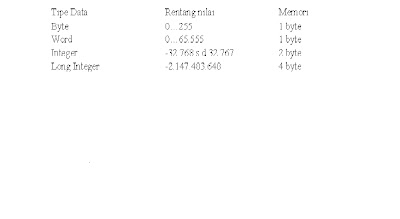Contoh Program Function

Program Menentukan Bilangan Terkecil Program Fungsi; uses wincrt; function kecil (A,B : integer): integer; begin if A kecil := A else kecil := B; end; var A,B: integer; begin clrscr; write('Nilai Bilangan 1 = '); readln(A); write('Nilai Bilangan 2 = '); readln(B); writeln; write('Bilangan Terkecil = ', kecil (A,B):5); readln; end. HASIL PROGRAM








